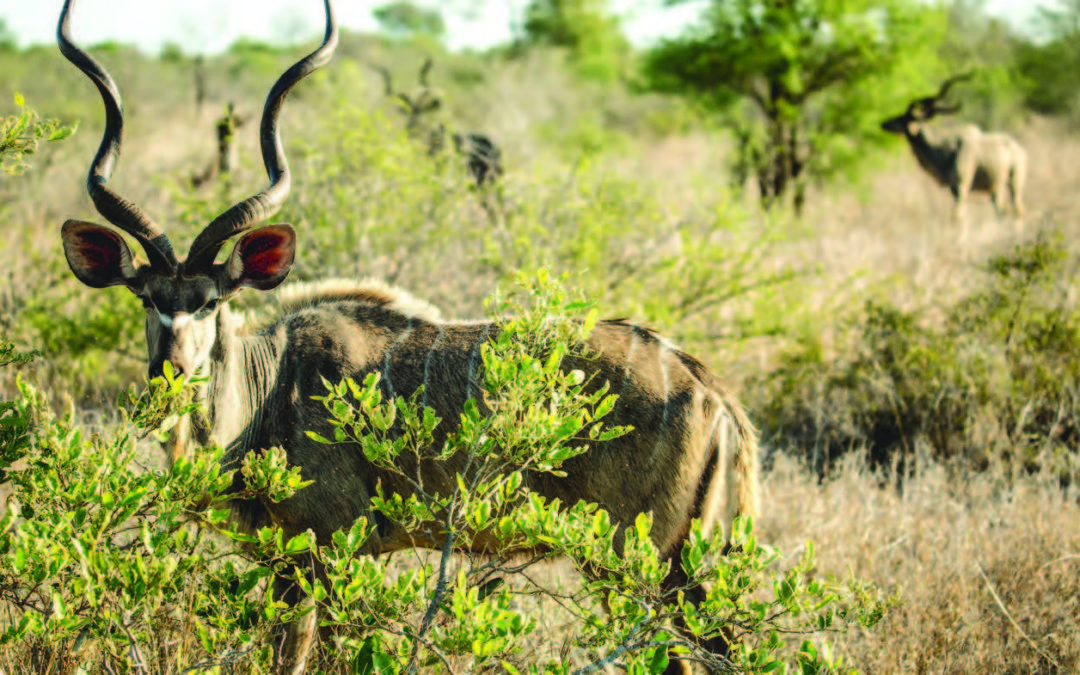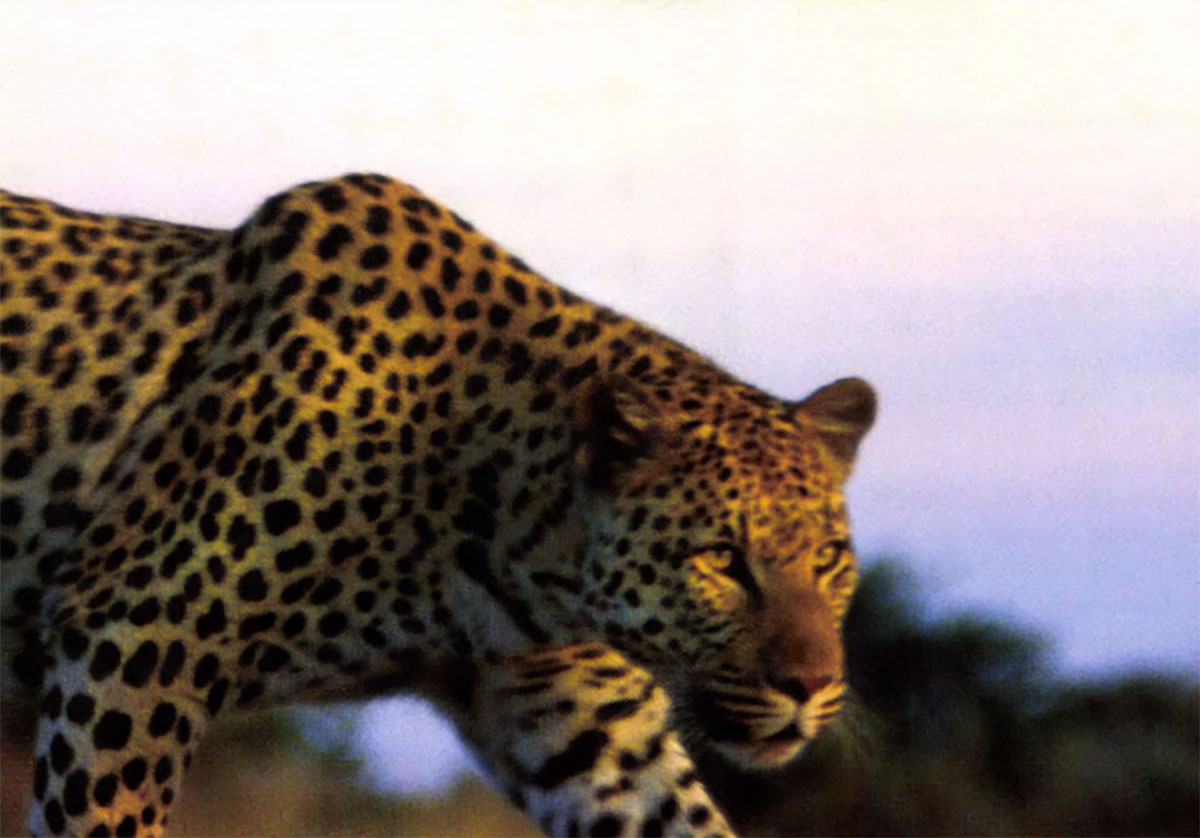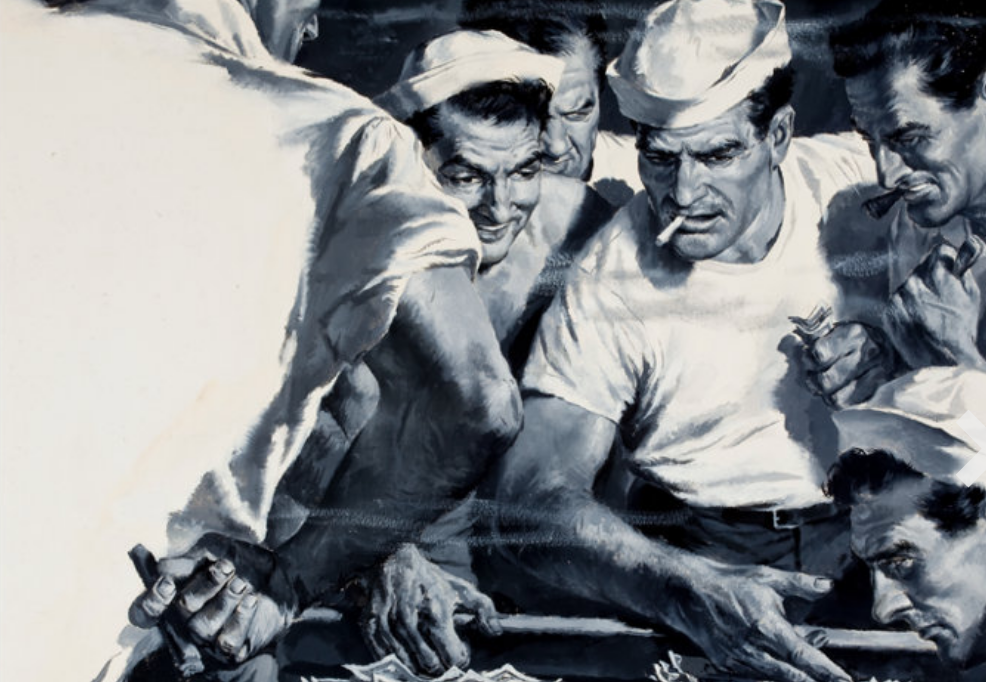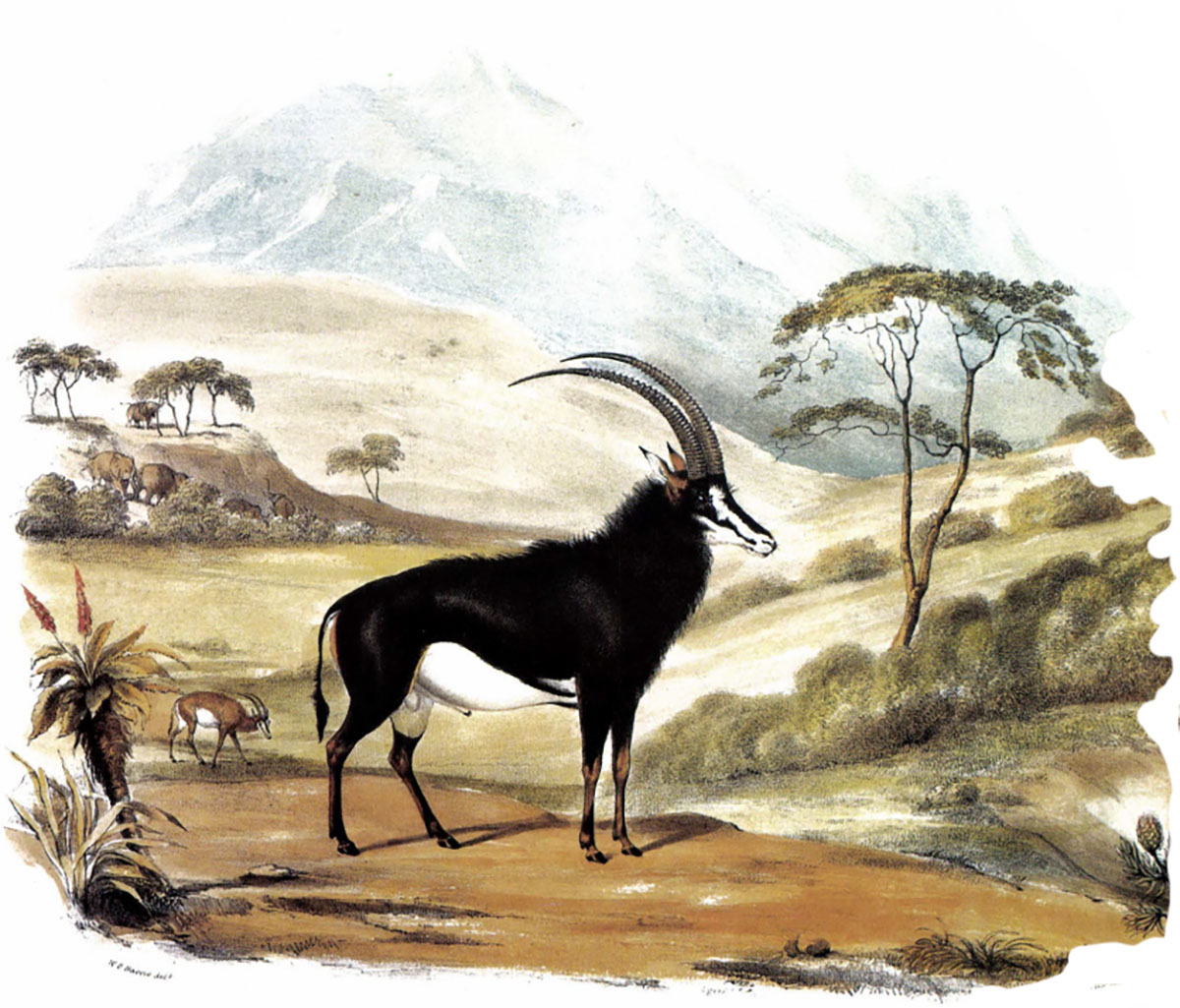If I was going to take a shot at the kudu we’d been hunting all day, it would have to be now. And it would be like threading a needle.
If I was going to take a shot at the spiral horned kudu we’d been hunting and tracking all day, it would have to be now. And it was going to be like threading a needle—there was no way of getting closer, what with the swirling wind and open ground between us. I’d have no choice but to find a path for my bullet through the dense scrub.
Time was not on our side. The area was teeming with wildlife, and at any moment we’d be scented. We had already heard a large group of buffalo bounce around to our immediate east, just 100 yards away beyond the cover we were in.
Moving slowly and silently, I identified what I thought would be a good-enough window through the arid mess of vegetation, not unlike a roll of barbed wire. I could see the animal clearly and steadied the rifle forend on sticks. As I did so, the kudu, though still unaware of our presence, turned to walk away. It was now or never.
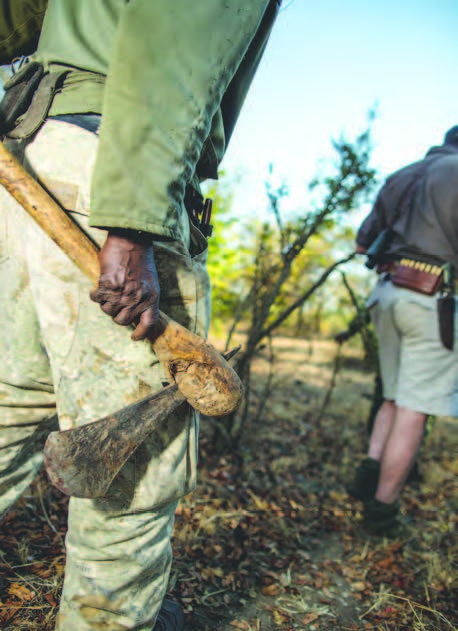
A handmade axe was used to clear the way.
Kudu Hunting Zimbabwe
Of all the spiral-horned species, I’ve always longed for kudu hunting. I was fortunate enough to be in the Savé Valley Conservancy in East Zimbabwe with Marc Newton, managing director of Rigby, where the wild animals have free range over some 800,000 acres. This extraordinary place, my veteran PH Butch Coaten explained, is a product of the late 1980s, when 18 landowners decided to pull down the cattle fences and make the change from farming to safaris.
“They realized it was vital to wildlife and the ecosystem, but also that it would be more profitable,” Coaten said. “When the area was farmed for cattle, the wild animals were persecuted. Not only did they take up resources by grazing, they were spreading hoof and mouth disease, so they had to be shot to maintain healthy cattle herds.”
Zebra and wildebeest were both targeted, and buffalo were wiped out in the region. Kudu, eland and impala remained, though in smaller numbers than today, and of course, predators were also trapped, shot or poisoned. The latter, Butch tells me, made an astonishingly fast recovery, and the Conservancy has to ensure that they do not become too many as that will affect prey species.
Butch works at various reserves in the valley as a freelance PH, but often hunts with clients from Sango Lodge, which, at 160,000, acres is the largest property in the Conservancy. Butch makes no bones about the fact that the lodge is a business and has to make money.
“The lodge takes a lot of investment to run, with more than 100 people directly employed by it, but in the end, if we don’t have healthy, sustainable numbers of game animals, there would be no business, so it’s in our interests to maintain a healthy population.
“There are anti-poaching units on each property, as well as a specific rhino anti-poaching unit, which is run independently. The rhino unit can go anywhere on the Conservancy. They also protect elephants from ivory poachers.”
Poaching, it seems, is still an issue, but Butch says it is more for meat than ivory and varies from year to year.
“This year we had bad rains, so locals are struggling to get by, which means the bushmeat poaching is higher.”
The Conservancy is still suffering from the effects of the notorious “Cecil” incident, despite the fact that both the hunter and the PH were found innocent in court of any wrongdoing. Today, every lion, leopard or elephant hunt in Zimbabwe has to be accompanied by a National Park Ranger, the expense of which is passed on to the hunter. The Conservancy works on a strict quota for certain game species. Six elephants, six lions and 23 leopards can be hunted over the entire area each year, with the individual property’s size dictating their share of this.
Marc and I were also shooting leopard bait for another member of our hunting party who had booked to hunt leopard, elephant, buffalo, crocodile and hippo, all of which are free range and wild in the Savé Valley. Sango Lodge is responsible for providing the entire conservancy with leopard bait. Zebra, Butch explained, was by far the best.
“It’s fat, soft meat, and there are plenty of them.”
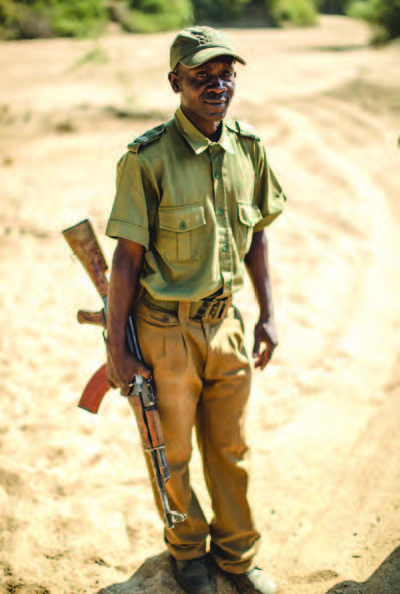
The lodge employs more than 100 people, among them this member of an anti-poaching unit.
Hunting, Tracking and Shooting the Greater Kudu
Another party of hunters was hanging the bait that Marc and I had shot with Butch’s colleague, Thierry Labat. While doing the rounds, the group had spotted a huge old warhorse of a kudu bull, the likes of which are rarely seen in the wild.
The call came over the radio.
“Butch, he’s a giant, fifty-seven inches at least. If you want a decent kudu, come now!”
The decision was easy, despite knowing that the tracking wouldn’t be, for we were at least two hours’ drive from Thierry’s position. He had marked the place where the bull disappeared into the cover with a piece of white tissue on a thornbush so we would have a start point. Still, it was going to be a master class in tracking.
A good two hours after the bull had been seen, we locked in on the tissue and the challenge ahead of us. Luckily, our tracker, Ringisai, or “Ringi,” was one of the most skillful I’ve ever had the pleasure to see at work. He was immediately able to recognize and read sign that was practically invisible to my unpracticed eyes. There were no snapped branches, no tracks, turned stones or rocks as far as I could see, but he kept on intently following the spoor.
Initially we covered the ground at a good pace. It was clear the wind was in our favor, but it was also clear that we had a lot of catching up to do.
“The bull’s in a group,” Ringi said. “They’re feeding.”
It seemed to me like some sort of magic trick, us working our way through thick bush in pursuit of an animal we hadn’t yet laid eyes on. The area was the real deal; true Big Five country, with elephant, buffalo, rhino, lion and leopard all in residence. All of which could jeopardize not just the hunt, but our very lives, the thickness of the bush meaning we might not realize danger was upon us until it was too late.
At one point, the nearby sounds told us we were in close proximity to a herd of buffalo, one of the most dangerous animals. Tensions rose as we not only worried about being charged, but also that the animals might spook the kudu bull.
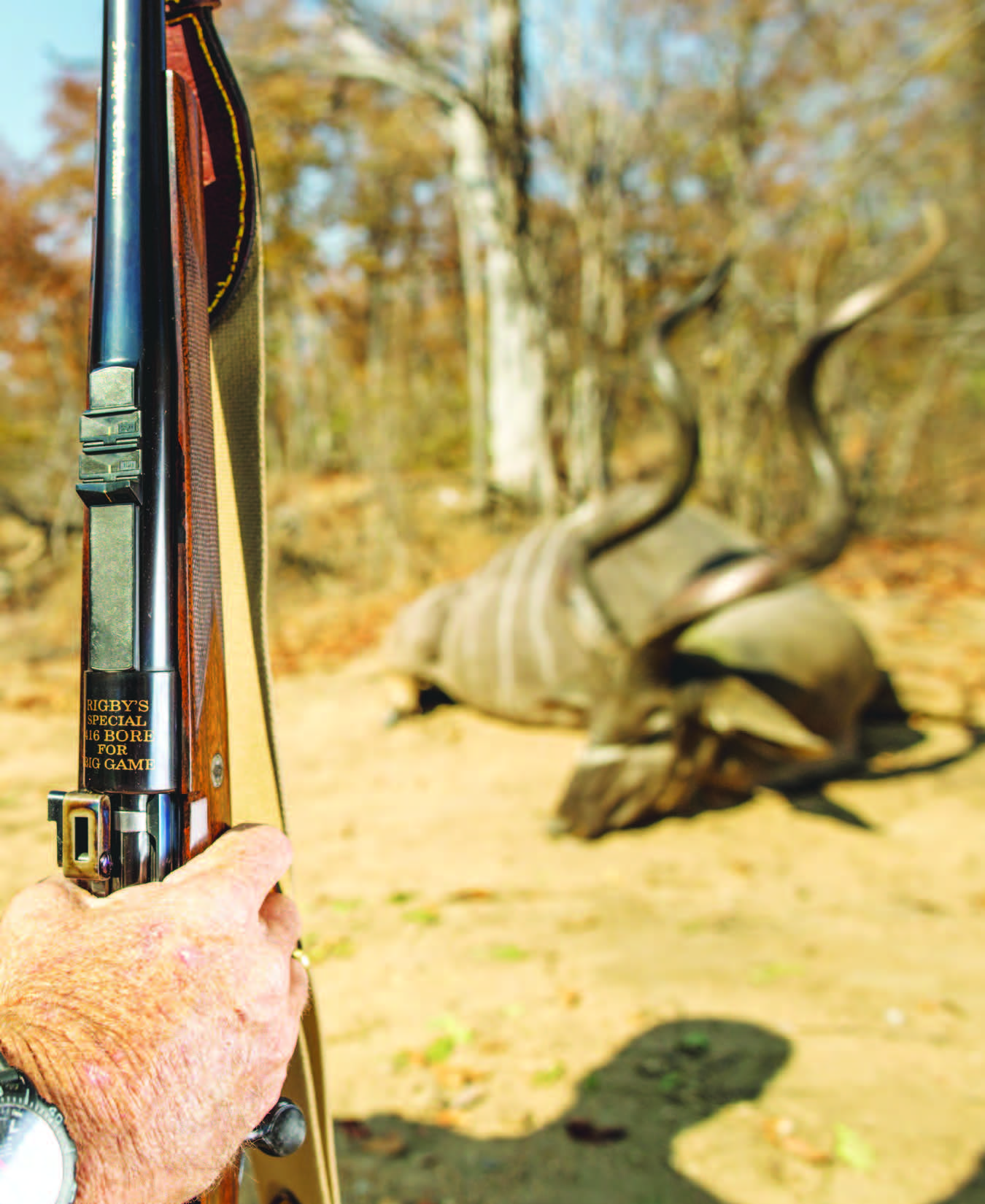
Two and a half hours of following an unseen quarry in an area with a high density of dangerous game takes its toll on the nerves, so when we first spotted the kudu, a behemoth of a bull, my heart pounded in my chest. We were in thick brush 200 yards away from the kudu, which was below us in a patch where the ground opened up a bit more. We’d need to get closer for a shot with my rifle’s open sights. Creeping through the brush, trying to be as silent as possible, I knew the shot would arrive very soon.
Finding a gap through which to shoot was no easy task, and to complicate matters even more, the kudu was now facing away but lower than us, its back and spine the only real targets I could see. The bull started to move off. I focused, trying to push the intensity of the moment to one side; trying not to think about all the effort that had gone into tracking the animal; and, of course, trying to ignore its size, which was deeply intimidating.
Aiming carefully, I dropped the bull on the spot with one of the best shots I can remember taking under pressure. The 400-grain bullet punched through the cover and landed between the spine and right scapula, instantly disabling this magnificent creature.
We wasted no time in our approach. He was huge and old, the front of his horns worn smooth, almost to ivory. The “bell,” which is formed by the first curl at the bottom of the horns, was enormous. Butch thumped me on the back, estimating the kudu’s age at 11 years—well past breeding age.
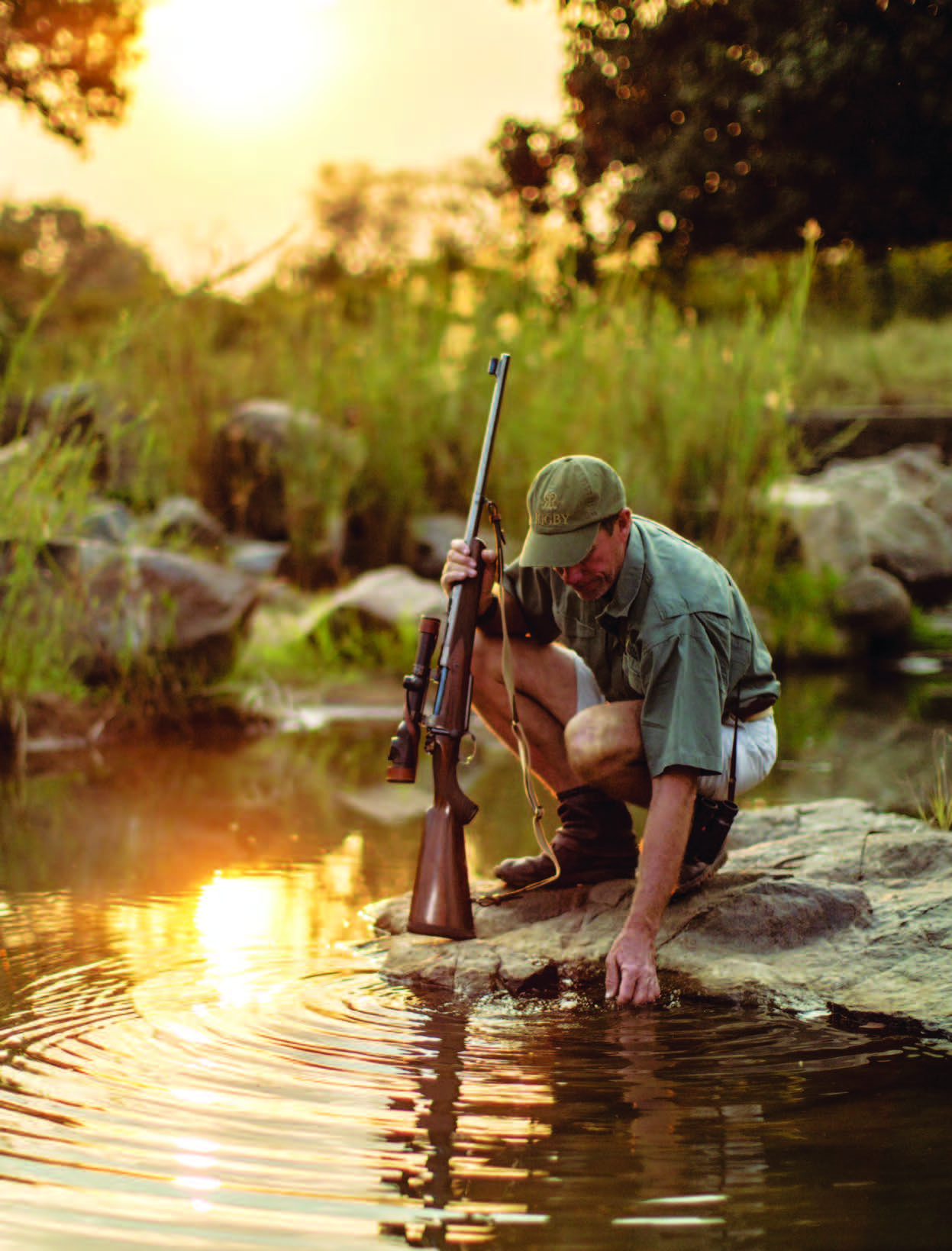
Veteran PH Butch Coaten washes his hands in the Savé River after a sweaty day of tracking kudu spoor.
Marc and I waited by the kudu, Butch leaving his rifle with us—this was predator country, after all. He warned us it might be an hour or two before he came back with the truck.
“I’ll have to cut a path to get the bukkie here, so sit tight.”
While the wait for Butch’s return was tense, and every crack or sound set my mind leaping, it also gave me time to reflect on the day. Kudu hunting had been a pure master class in tracking, but it was also a chance to experience conservation at its best, which culminated in a kudu bull of a lifetime. Truly a hunt I would never forget.
Facts about the Greater Kudu
The Kudu Tragelaphus strepsiceros, or the greater kudu, is classified as an antelope; Tragos is the Greek for “he-goat,” elaphos being the word for deer. Strephis means “twisting” and keras “horn,” which is where the full scientific name comes from.
As with many of the antelope species, greater kudu males tend to be solitary, though they occasionally live in bachelor groups—males only join the females during the mating season. Calves grow quickly and are almost independent of their mothers at just six months. The bulls tend to be much larger than the cows and are very vocal, using grunts, clucks and gasps.
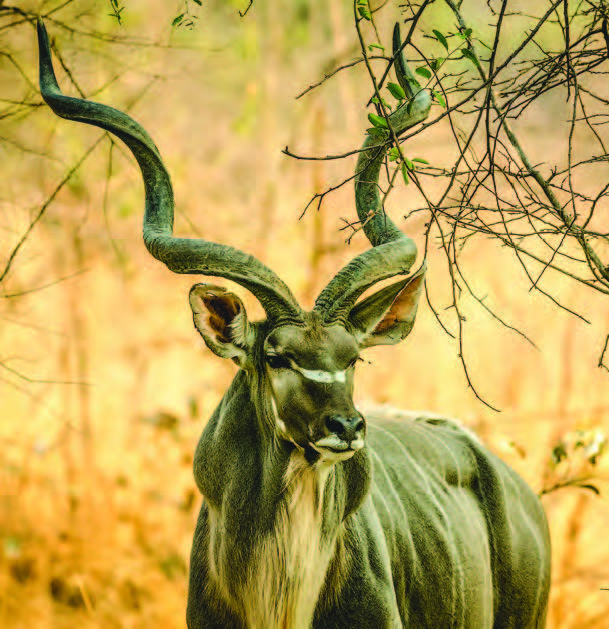
The bull’s horns start to grow when it reaches 6 to 12 months of age, producing one twist at two years old and the full two and a half twists at six years. Very occasionally their horns will have three full twists.
One of the largest species of antelope, greater kudu bulls can weigh 600 pounds or more and stand five feet at the shoulder; cows are much smaller, about three and a half feet high at the shoulder and hornless. The cows also don’t possess the white stripe across the nose that bulls have.
Like all antelope, kudu are extremely hardy, but unlike many antelope species, they do not have the speed or stamina to escape predators in open country. They are athletic and nimble, however, and can leap over shrubs or bush to avoid being caught—hence their favored habitat of thick bush, making kudu hunting no simple task.
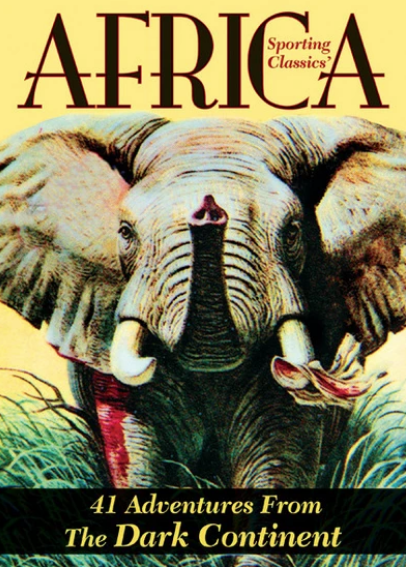 Ruark, Capstick, Roosevelt, Markham—the legends in outdoor literature are all here, sharing their stories of deadly encounters with dangerous game, of bizarre run-ins with witch doctors, gorillas and man-eaters, of safaris into the uncharted wilds of deepest Africa. When explorers first traveled to Africa something compelled them to write down their experiences. Is it possible that the echoes of those first fireside tales still whisper in the breeze? When you read these stories you will hear it, because these writers and adventurers tapped into Africa’s ancient rhythm to make you feel as if it’s the first story you’ve ever read. Shop Now
Ruark, Capstick, Roosevelt, Markham—the legends in outdoor literature are all here, sharing their stories of deadly encounters with dangerous game, of bizarre run-ins with witch doctors, gorillas and man-eaters, of safaris into the uncharted wilds of deepest Africa. When explorers first traveled to Africa something compelled them to write down their experiences. Is it possible that the echoes of those first fireside tales still whisper in the breeze? When you read these stories you will hear it, because these writers and adventurers tapped into Africa’s ancient rhythm to make you feel as if it’s the first story you’ve ever read. Shop Now

